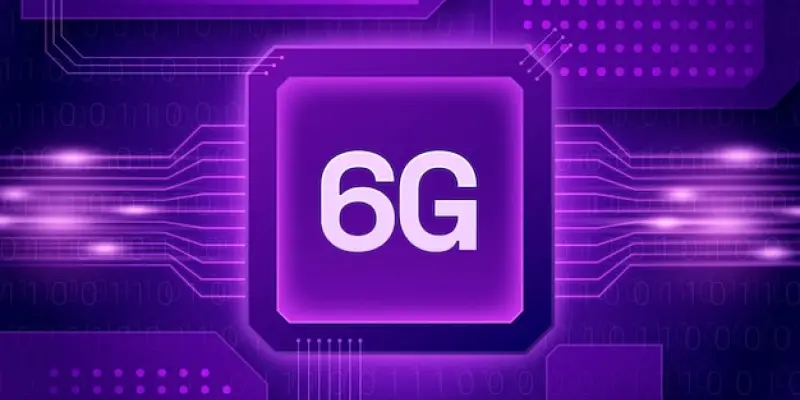The European Telecommunications Standards Institute (ETSI) has unveiled a comprehensive report highlighting the remarkable sensing capabilities that will be integrated with the 6G network, particularly through the implementation of Integrated Sensing and Communications (ISAC) technology. This significant advancement is expected to revolutionize numerous industries by seamlessly merging communication with environmental sensing, creating a more intelligent and responsive digital landscape.
Healthcare to Transportation: A New Era of Industry
Healthcare Improvements
In healthcare, 6G networks hold promise for vastly enhancing patient care through continuous monitoring of vital statistics like heart rate and breathing patterns, especially in public spaces. For example, sophisticated sensors integrated with 6G technology could alert emergency services almost instantaneously when medical emergencies occur, potentially saving countless lives. Moreover, the advent of remotely controlled robots equipped with advanced sensing capabilities could provide critical care for the elderly, functioning both as caregivers and health monitors. These robots could detect changes in health status and alert medical staff or family members in real time, providing an added layer of safety for vulnerable populations.
Transportation Enhancements
Transportation systems could be transformed with ISAC technology by achieving improved traffic management solutions through enhanced sensor arrays and visual data processing. With these advancements, traffic flow and safety can be optimized as systems become capable of real-time decision making. Furthermore, ISAC technology’s role in unmanned aerial vehicle (UAV) operations is poised to revolutionize Beyond Visual Line of Sight (BVLOS) activities. Secondary verification of position data will heighten the safety of UAVs, enabling complex navigation and reducing the risk of accidents. This capability is particularly important for sectors like logistics and emergency services, which rely heavily on precision and reliability in drone operations.
Revolutionizing the Industrial Sector
Advancements in Automation
The industrial sector stands to benefit enormously from ISAC technology, as it allows for increased automation through collaborative robots, or cobots. These machines, designed to work alongside human operators, will enhance precision in tasks such as manufacturing and construction. Cobots equipped with advanced sensing technologies will be capable of performing intricate operations that require high levels of accuracy, thus reducing errors and maximizing efficiency.
Real-time Cyber-Physical Systems
The concept of Real-time Cyber-Physical Systems (R-CPS) in hazardous environments is another area where 6G networks will be instrumental. These systems enable remote robot operation, ensuring that tasks in dangerous conditions can be completed without risking human lives. Supported by low-latency communication, R-CPS allows for near-instantaneous responses to changes in the environment, making it possible to manage and control robots in real time even from great distances. This advancement could revolutionize sectors such as mining, oil and gas, and disaster response.
Technical and Security Challenges
Meeting Key Technological Challenges
Key technological challenges include achieving fine-scale motion detection, ensuring low latency, and operating effectively in diverse conditions. To address these challenges, the integration of multi-sensor data fusion with artificial intelligence (AI) and machine learning (ML) is essential. This combination ensures that data from various sensors can be analyzed and processed rapidly, providing accurate and actionable insights. Developing these capabilities will require significant research and innovation, particularly in the areas of sensor technology and AI algorithms.
Ensuring Security and Privacy
ETSI’s report also highlights the critical importance of addressing security and privacy concerns associated with many use cases of 6G technology. Human sensing applications, in particular, raise significant privacy issues that must be managed carefully. Ensuring robust data protection and obtaining user consent will be paramount to gaining public trust and meeting regulatory requirements. Security measures must be integrated at every level of the network to safeguard sensitive information and prevent unauthorized access.
The Path Forward
Specifications and Metrics
ETSI’s report specifies crucial requirements and Key Performance Indicators (KPIs) for 6G systems, focusing on aspects such as positioning accuracy, velocity estimation, sensing resolution, latency, and reliability. For instance, new metrics like ‘Fine Motion Accuracy’ have been proposed to cater to various deployment needs across urban and industrial settings. These specifications are foundational, aiming to guide the development of cutting-edge 6G technologies and ensure their successful implementation across diverse sectors.
Future Considerations
The European Telecommunications Standards Institute (ETSI) has released an in-depth report that illustrates the extraordinary sensing capabilities set to be part of the upcoming 6G network. This will be greatly enhanced through the implementation of Integrated Sensing and Communications (ISAC) technology. This groundbreaking innovation is poised to significantly transform various sectors by blending communication with environmental sensing. Such integration will lead to a more intelligent and responsive digital ecosystem.
With 6G, the typical boundaries between communication networks and sensing applications will blur, making new forms of data interaction and industry applications possible. ISAC will allow real-time data collection and interpretation, vastly improving efficiency in fields like transportation, healthcare, and urban planning. Enhanced connectivity and precise environmental insights will enable smarter cities, autonomous vehicles, and advanced medical diagnostics, simplifying and improving daily life. This comprehensive fusion of tech will not only streamline services but also pave the way for future advancements, ensuring that society reaps the benefits of a seamlessly connected, sensor-rich environment.

